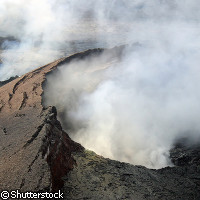New monitoring equipment keeps a close watch on volcanoes
Researchers from the Chalmers University of Technology in Sweden have developed monitoring equipment to measure the levels of sulphur dioxide emitted by volcanoes. The equipment will be used on 17 of the world's most active volcanoes and the results obtained will help scientists to predict volcanic eruptions and improve global climate models. It could also be used to measure pollution levels in cities. The world's most active volcanoes - which include Etna and Stromboli in Italy and Kilauea in Hawaii, US - have observatories continuously monitoring several aspects of volcanic activity including seismic activity, to prepare for possible evacuations in the case of eruption. The advanced monitoring equipment developed by researchers will add a new dimension to these observatories' activities and help to improve safety and security around volcanoes. 'Increasing gas emissions may indicate that magma is rising inside the volcano,' says Dr Mattias Johansson from the university's Department of Radio and Space Science, who was involved in the development of the innovative equipment. 'If this information is added to the other parameters, better risk estimates can be made at the observatories.' The new monitoring equipment will measure the total amount of gas emitted by volcanoes, whereas other measuring methods are only able to measure gas at particular points. Dr Johansson's method is different because it places measuring equipment in different positions around a volcano and can then add up the figures to create a total. Dr Johansson's research work has also made the monitoring equipment energy efficient and strong enough to operate in countries with inhospitable climates, difficult terrain and poor infrastructure. 'I have primarily been working with the software required for processing and presenting the measurement results,' he explains. 'Among other things, I have created a programme that analyses the data collected, calculates the outward flow of gas, and presents the information as a simple graph on a computer screen that the observatory staff need only glance at to find out how much sulphur dioxide the volcano is emitting at any particular time.' The measuring equipment can also be used to measure air pollution in cities and therefore help to improve global climate models, as researchers will now be able to receive regular reports about how much sulphur dioxide is being emitted by volcanoes. 'Sulphur dioxide is converted in the atmosphere to sulphate particles and these particles need to be factored into climate models if those models are to be accurate,' says research partner Associate Professor Bo Galle, also from the Chalmers University of Technology. 'Volcanoes are an extremely important source of sulphur dioxide. Mount Etna alone, for instance, releases roughly 10 times more sulphur dioxide than all of Sweden does.'
Countries
Sweden



